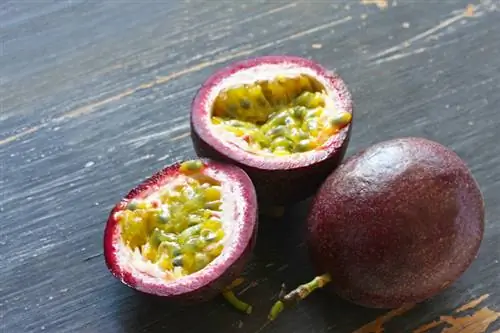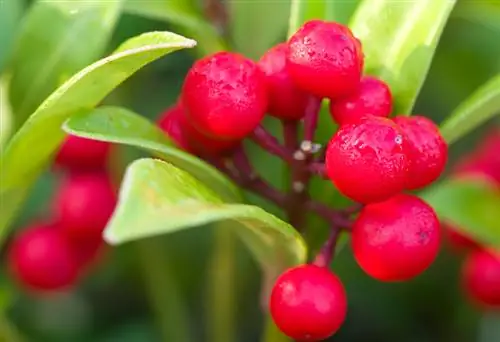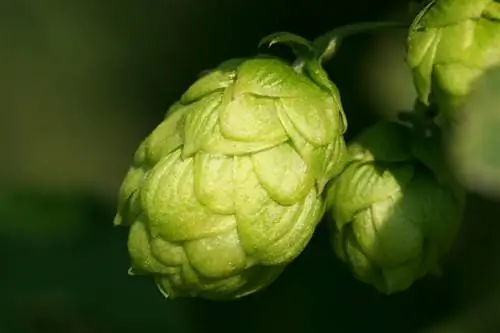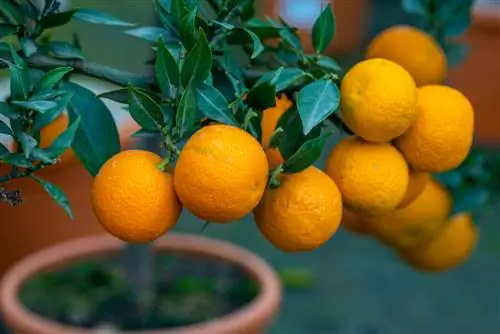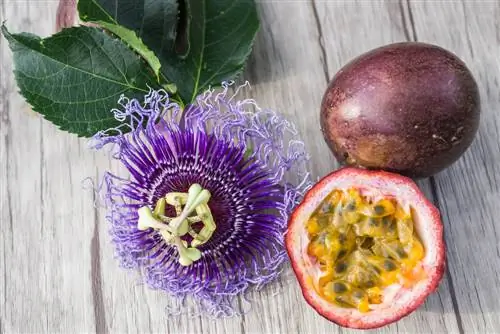- Author admin [email protected].
- Public 2023-12-16 16:46.
- Last modified 2025-01-23 11:20.
The name passion fruit is often used in this country as a synonym for passion fruit. The name is actually not entirely correct, as there are actually two types of fruit.
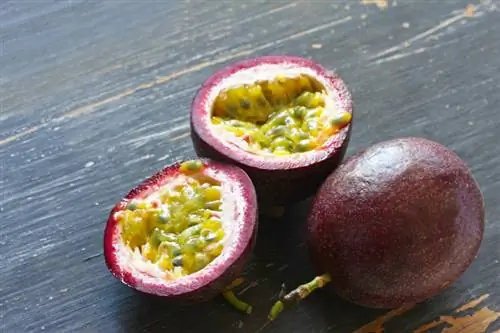
What is the difference between passion fruit and passion fruit?
Passion fruit and passion fruit are two different types of fruit, the former having purple and wrinkled skin and the latter being yellow-orange in color. However, both have similar taste and are often used as fresh fruit, fruit juice or in smoothies.
The passion flowers and their fruits
Most of the more than 530 subspecies of the passion flower genus (Passiflora) grow with climbing tendrils that lignify into shrubs and trees to varying degrees. Most varieties of passion fruit originally come from South and North America, although there are also some species with origins in Australia and remote places such as Madagascar. The plants with their characteristic flowers received their name, which is reminiscent of the Passions of Christ, at the time of the missionization of South America, when missionaries believed that they recognized symbols of the Passion of Christ in the different parts of the flowers. While the fruits of cultivars that are popular because of their flowers, such as those from the subgenus Decaloba, can be inedible or poisonous, most passion fruit varieties are very popular as fresh fruit and fruit juice.
The passion fruit with purple colored skin
The fruits sold in this country under the name passion fruit are usually the fruits of the so-called purple granadilla plant genus. This resembles an egg in shape and size, but has a smooth and shiny purple shell. Botanically speaking, they are berries, but actually only the contents of the cut fruit, consisting of seeds and attached pulp, are eaten. It is often said that a very wrinkled peel of the purple-colored passion fruit would indicate the optimal degree of ripeness. However, you can also eat a passion fruit with smooth skin without any problems; it will only have a slightly more sour taste than fruits that are very shriveled and therefore more advanced in ripening.
The passion fruit or Granadilla
For decades, the label on many juice bottles has shown a sliced passion fruit with a purple peel next to the name passion fruit. Actually, that's not entirely correct, as passion fruits are usually referred to as yellow to orange colored passion fruits. Even in the advanced state of maturation, these have a relatively pressure-resistant shell, but are otherwise not dissimilar in shape and size to the purple-colored representatives of the species. The yellow granadilla sometimes grows a little larger and is often not quite comparable in taste to the purple colored fruits of the Passiflora edulis. That's why these are rarely offered as fresh fruit in stores and end up in the juicer much more often.
The taste difference between passion fruit and passion fruit
Basically, the difference in taste between the fruits of both subspecies of passion flowers is not very big, even if they are not entirely the same. The principle that is the same in both types is that the seeds and pulp are eaten together and usually with a spoon. There are further possible uses:
- as a fruit garnish for ice cream sundaes
- as top fruit for cakes like Pavlova
- as a pureed ingredient for smoothies
Tips & Tricks
In stores, passion fruit and passion fruit are often sold interchangeably under both names. Both varieties are basically equally suitable for direct consumption and processing in the kitchen.

